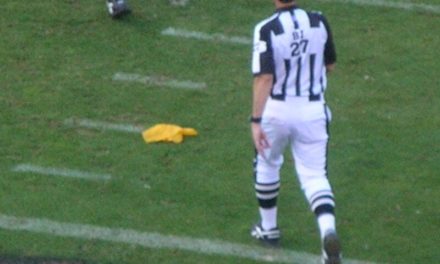We are grateful to Steve Lockwood, executive director of the 15-year-old Frayser Community Development Corporation, for this post. He has led the CDC’s work in this historic neighborhood annexed by Memphis in 1958 for about a dozen years and is recognized as a leader in his industry.
By Steve Lockwood
Cleveland Ohio recently announced they plan to spend $50 million to demolish blighted houses in their City. Perhaps that’s a good strategy for them, or for Detroit, Flint or Youngstown, but it’s a poor strategy for Memphis. Memphis has done its share of demolitions. In August 2012: … The Neighborhood Stabilization Program is funded by a grant from the U.S. Department of Housing and Urban Development. The program targeted six Memphis neighborhoods for blight demolition: Frayser, Binghampton, the Vance Avenue area, Glenview, Orange Mound, and Soulsville.
Demolishing houses, particularly in neighborhoods like Frayser, is always the simplest solution. An empty, unsecured, blighted house is easy to tear down, but often not the best solution for the neighborhood or the City. Scraping a house clean costs about $4,000, but in low-value communities will generally result in an overgrown vacant lot for decades to come. No one will be coming to build a new house there anytime soon.
Many condemned houses, however, could be saved and reused. It is more cost effective, even with houses that are in very poor shape, to renovate than it is to build new. Unfortunately, our city does not have a strategy for stabilizing abandoned houses. While the city will sporadically board up blighted houses, there is no entity that is responsible for doing a roof repair that would allow a house to be reused when it comes out of the legal limbos of tax or mortgage foreclosure.
Again, the City has no strategy for protecting its residential tax base. Our research shows that if you allow houses to deteriorate and be demolished, you adversely affect far more than just that house. On the other hand, revitalizing a blighted house positively affects housing values of every home within 450 feet. Data show that fixing one blighted property in Frayser raises surrounding property values a collective $184,000.
Frayser CDC, in recent years, has received a number of houses in donation, and regifted them to investors on the condition that they bring them up to code and get them occupied. If, after 18 months, they are not in compliance, the houses can be taken back. We’ve not taken any back yet. When fixed and occupied they are not always the best housing stock in the area. We believe a grade B rental beats an overgrown lot.
Better yet, we’ve been able to give a few houses to owner occupants. This can be tricky. It’s hard to assess which low income family has the skills and resources to salvage a blighted property. So far, we’ve been successful more often than not.
Why doesn’t the City of Memphis do this? They have the legal tools and understanding of how to demolish houses. But, they are not confident in a system for getting title to abandoned properties so that they could be granted or sold to others. We have often seen houses that are unsightly but structurally sound and in functional neighborhoods be torn down. The City is a one trick pony. If all you have is a bulldozer, every blighted house looks like a pile of sticks.
Demolitions should be a solution of last resort. It is a defeat for both the neighborhood and our tax base. Energy and resources should be put into acquiring, stabilizing and reusing viable homes in every neighborhood, instead of creating weedy vacant lots. While we have lost some of our population, we have not lost 60%, as has happened in cities like Detroit. It is our experience that there is a market in every neighborhood for good quality homes. All of the blighted houses we acquire in Frayser, after renovation, have been sold or rented.
A new process could save the City millions in demolition costs, but that’s the tip of the iceberg. In an era when cities routinely lose population to the suburbs, these salvaged houses would help arrest that trend in Memphis, and shore up our lagging tax base. Perhaps it could ultimately get us off the top of the list of sprawled cities and all that brings – closed schools, inadequate public transit, etc.
To be clear, this is not just for nonprofits. A well designed system could make houses available, on a larger scale, to all sorts of developers. There are many thousands of blighted houses — let’s turn the market loose on salvaging them.





Our tax base is more than weak. It’s broken. So much so because of an abundance of abandoned and blighted property. We have way too many empty, trash filled lots across much of Memphis. These properties do not help our tax base and property taxes are already far too high and hurt this distressed city.
Thanks, Steve, for pushing back on conventional wisdom that the best solution for vacancy is tear-downs. We saw what that strategy produced in downtowns across the country — downtowns pocked with surface lots that are the last pieces of property to be developed and often inappropriately for urban areas. We need to have neighborhood strategies that look at where homes land can be reused and redeployed in unconventional ways before we tear down.
Near downtown, the whole area from 240 to Danny Thomas, along Lauderdale, Beale and Vance is very empty and blighted. Very dark and dangerous at night. Not a good image for the city. We once had some good housing stock but it torn down decades ago in the name of “urban renewal” which has formed a no mans land ring around much of downtown.
I completely agree with Steve’s points. In many cases we are losing buildings in historic neighborhoods to this cycle of neglect which so often leads demolition. We are tearing down our assets when this happens.
Way too much blight in Memphis. Vacant lots are no better.
Key takeaway from reading this: Memphis has no strategy for protecting its residential tax base.
Very true, and the same rethinking of strategy that’s appropriate for Frayser neighborhood is appropriate for Rozelle or Glenview or ….
… in the end, though, there are some neighborhoods that could be torn down. I’m not sure the City has the chops to effectively work with groups of folks to relocate them (in essence, transfer title to a new piece of property in a better neighborhood, or at least pay them a true fair amount for their existing property). But vestigial and struggling neighborhoods like Smith Ridge (Frayser) need to go. This solution isn’t as eloquently represented geographically on the city’s beleaguered southern borders, where sprawl has enveloped bad neighborhoods inside slightly better ones, or near higher land uses (like the airport) that can’t just be cut off from the city.
There’s also so many moving pieces here for which coordination would be a behemoth task. But imagine if Choice Neighborhoods had the flexibility to coordinate with the City of Memphis, Memphis Heritage, and various community groups/CDCs to decide where and how to spend money. Instead of new public housing, maybe we could fix those houses in Westside Frayser or Pigeon Roost.
Guess we can dream.